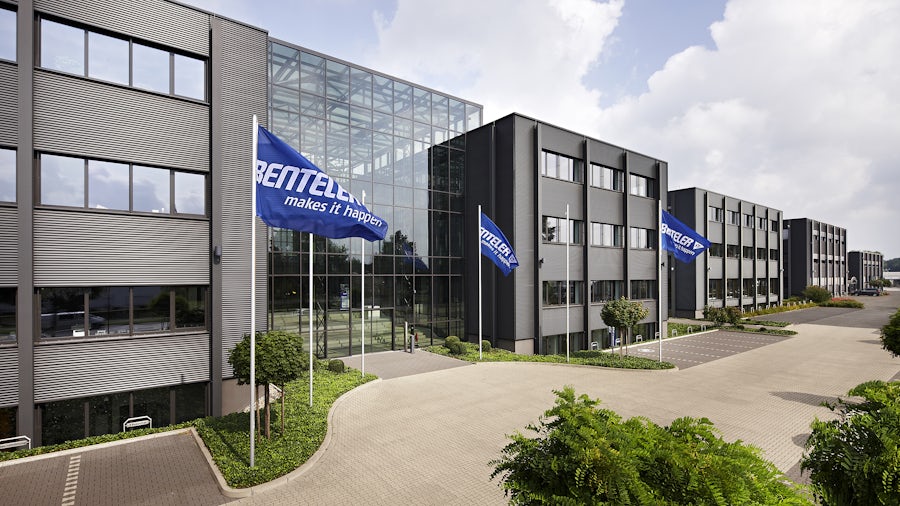优化报价计算流程,将报价生成时间缩短 40%
汽车供应商本特勒使用 Teamcenter 产品成本管理解决方案来计算成本和碳足迹

本特勒汽车技术有限公司
本特勒汽车零部件和本特勒汽车模块事业部开发和生产用于汽车底盘、车身、发动机和排气系统的组件和模块。
- 总部:
- 帕德博恩, Germany
- 产品:
- Teamcenter, Teamcenter Product Cost Management
- 工业板块:
- 汽车及交通运输行业
使用 Teamcenter 产品成本管理优化了我们的报价计算流程,因此我们将报价时间缩短了 40%。
让出行更安全、更可持续
本特勒集团的汽车业务由两个事业部组成:本特勒汽车零部件和本特勒汽车模块。作为世界领先汽车制造商的开发合作伙伴,这两个事业部与 20 多个国家/地区的约 20,000 名员工合作,为其客户开发量身定制的解决方案。他们的产品组合包括底盘、车身、发动机和排气系统等领域的零部件和模块,以及电动汽车电池存储系统等未来技术。该公司还为整个价值链的客户提供支持,从产品构思到开发再到生产和组装。
对于像本特勒这样的全球制造公司来说,财务规划和企业管理中的预测和成本分析是评估新投资、项目计划和报价提交及其财务影响的先决条件。
过去最大的挑战是使用正确的数据和正确的计算方法、格式或版本。此外,盈利能力计算和静态计算是不同的系统,需要大量的手动数据传输工作。旧系统更容易出错,无法再反映其业务的复杂性。
为了找到解决方案,这两个事业部与 Siemens Digital Industries Software 合作,并于 2014 年开始使用 Teamcenter® 产品成本管理解决方案,该解决方案是 Siemens Xcelerator 软件、硬件和服务业务平台的一部分。Teamcenter 产品成本管理解决方案赋能本特勒在整个产品生命周期中实现统一和早期的成本控制。
-640x360.jpg?auto=format,compress&w=843&q=60)
统一数据并简化计算方法
利用此解决方案,将所有企业成本信息统一到一个集中式数据库中,确保每个员工都使用相同的数据。这包括来自企业资源规划 (ERP)、产品生命周期管理 (PLM)、计算机辅助设计 (CAD)、电子表格和外部基准数据的信息。系统在应用程序中收集、编辑、处理和表示成本数据。这为用户提供了他们做出可靠的产品和投资决策所需的有效、标准化和可比较的数据基础。
使用 Teamcenter 产品成本管理还定义了标准化流程、计算方法、计算标准和计算逻辑,以促进对成本的统一理解和结果比较。通过该解决方案,本特勒可以将公司所有涉及成本控制的领域,从开发、生产、采购和销售到控制和高层管理,整合到各个接触点的成本计算中。
此外,通过使用该解决方案,公司可以透明地计算产品生命周期所有阶段的开发、产品和制造成本,并通过成本透明性更快地识别优化的潜力。
计算报价
随着价格压力、全球竞争和全球项目的增加,精确和快速生成报价计算成为一种竞争优势。本特勒的客户通常希望在第一次请求后两到三周内得到报价。这些请求因按图生产和开发相关的请求而异。
对于按图生产请求,员工根据客户的规格和计划精确计算和评估组件和模块。
对于与开发相关的请求,他们首先检查客户的确切请求。然后,他们收集所有必要的信息并定义项目的相应框架参数。开发团队必须从技术上描述产品并创建工程物料清单 (eBOM)。这包含采购和生产团队的基本信息。根据这些信息,采购团队通过供应商或使用采购价格分析确定成本。
同时,生产团队制定工作计划,比较可能的生产概念并确定工厂要求。这还包括投资新工具或增加额外人员。采购和制造团队使用自制或外购分析来定义创造价值深度。最后,制造 BOM (mBOM) 就绪,其中包含材料、工具、工作计划等。
Teamcenter 产品成本管理在计算报价中起着主要作用,因为它可以确保快速可靠地编译所有与成本相关的数据,从而加快计算的创建速度。
“使用 Teamcenter 产品成本管理优化了我们的报价计算流程,因此我们将报价时间缩短了 40%,”本特勒汽车零部件的控制器专家托马斯·科萨克 (Thomas Kossak) 说。
-640x360.jpg?auto=format,compress&w=843&q=60)
计算盈利能力
本特勒的会计团队对有关合理性、竞争力、机会和风险的结果进行整合和检查。然后,结果将表示在 Teamcenter 产品成本管理盈利能力计算中。这是一项全面的整体评估,包括应计成本、预期收入、现金流和各个关键数据,例如销售回报率和资本回报率。管理评审后,项目管理和管理团队决定是否按计算结果提供项目,或者是否需要优化。
管理团队通常需要分析和仿真作为决策的基础,这需要大量的信息。这包括数量场景、货币波动、付款时间和折扣。通过使用 Teamcenter 产品成本管理,本特勒可以创建特定场景并快速可靠地交付结果。
为了检查长期合同关系对提交项目期间的盈利报价的影响,公司可以使用多维假设方法。这意味着,在什么条件下生产是盈利的?在需求减少或供应链延迟的情况下,如何有效地管理现金流发展?
“为了实现可靠的公司管理,使用 Teamcenter 产品成本管理对项目成本进行建模为全面评估长期交付协议或新投资的机会和风险提供了最佳条件,”科萨克说。
获得批准后,销售代表可以将报价发送给客户。在下订单之前,客户可以要求更改和/或场景,要求重复报价流程并进行适当的调整。
如果发生后续更改,例如,由于客户需求或场所的变化,公司可以使用 Teamcenter 产品成本管理自动同步内部和外部计算数据。这意味着计算结果仍然易于理解。此持续控制选项对于确定更改人员和更改时间尤为重要。此外,每次更新对盈利能力的影响变得更加明显。
例如,用户可以推导出用于价格讨论的参数。通常,本特勒的客户希望确切地知道销售价格的构成,并要求进行成本细分。通过 Teamcenter 产品成本管理,所有相关的计算数据,如材料成本、制造成本、间接费用等,都可以自动填写到成本明细表中。
通过 Teamcenter 产品成本管理,本特勒可以根据全面的自下而上的规划快速整合企业范围的成本数据,并为战略性规划新的业务活动提供可靠的数据源。借助这种简化的解决方案,员工可以将更多精力集中在他们的核心活动上,从而留下更多精力来优化成本。这意味着公司可以进行更经济的可行性计算,评估更多方案并询问更多供应商报价,从而为成本杠杆创造更多时间。通过不断分析成本结构和基准并评估优化措施,例如降低采购零件价格、改进周期时间、优化材料等,可以可持续地降低制造成本。
将可持续性与盈利能力相结合
几年来,原始设备制造商 (OEM) 在减少车辆的二氧化碳 (CO2) 排放以符合法规要求方面的压力一直在增加。这项针对 OEM 的更严格的 CO2 法规也影响了像本特勒这样的供应商。该公司根据客户要求计算模块和组件的 CO2 排放量。
“以前,客户项目的主要关注点是成本标准;但是,现在这包括产品的 CO2 足迹,“科萨克说。
为了实现自己的可持续发展目标,本特勒及其客户越来越关注材料和制造工艺的 CO2 足迹。因此,该公司通过将产品的 CO2 评估整合到现有的成本和成本计算流程中,将可持续性和盈利能力相结合。为此,他们使用了西门子的附加模块 Teamcenter 碳足迹计算器。借助该解决方案,本特勒可以在开发阶段的早期测量、模拟和减少其产品的 CO2 足迹。
在 Teamcenter 产品成本管理中利用 mBOM,公司可以确定每个 BOM 元素释放的温室气体量。该解决方案考虑了所有过程,从提取原材料或回收材料、生产初步产品到生产最终产品(从摇篮到工厂大门)。
“使用 Teamcenter 产品成本管理解决方案可以确保更高的效率,因为我们可以计算我们产品价值链中大量产品的成本和 CO2 足迹,”科萨克说。“我们可以利用 Teamcenter 来分析影响,以此权衡 CO2 足迹、利润率和客户价值。”
本特勒汽车零部件和本特勒汽车模块这两个事业部仍在有效地利用 Teamcenter 产品成本管理来提高成本透明度和碳足迹。利用此解决方案将继续支持跨部门和跨地点的协作,提高做出基于事实的决策的效率,并加快报价流程。由于成本、碳足迹和投资计算等广泛的功能,管理人员可以获得最佳支持。
我们可以利用 Teamcenter 来分析影响,以此权衡 CO2 足迹、利润率和客户价值。